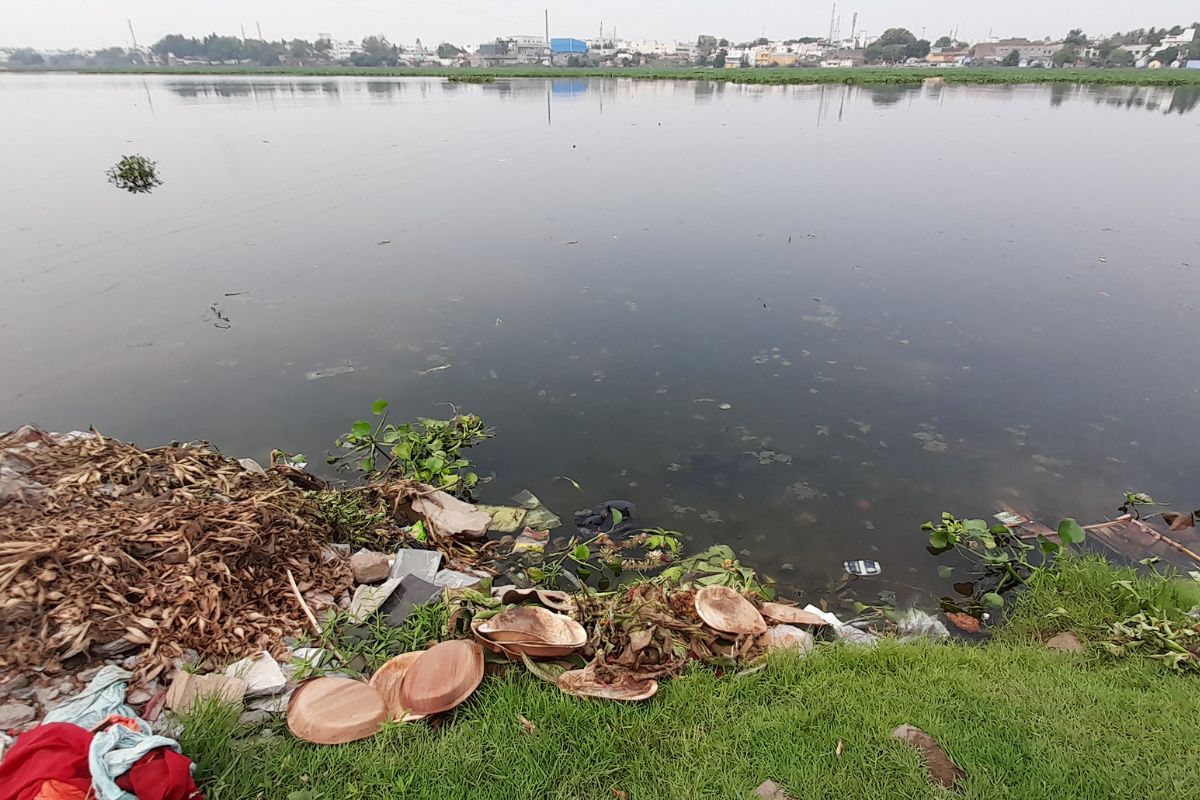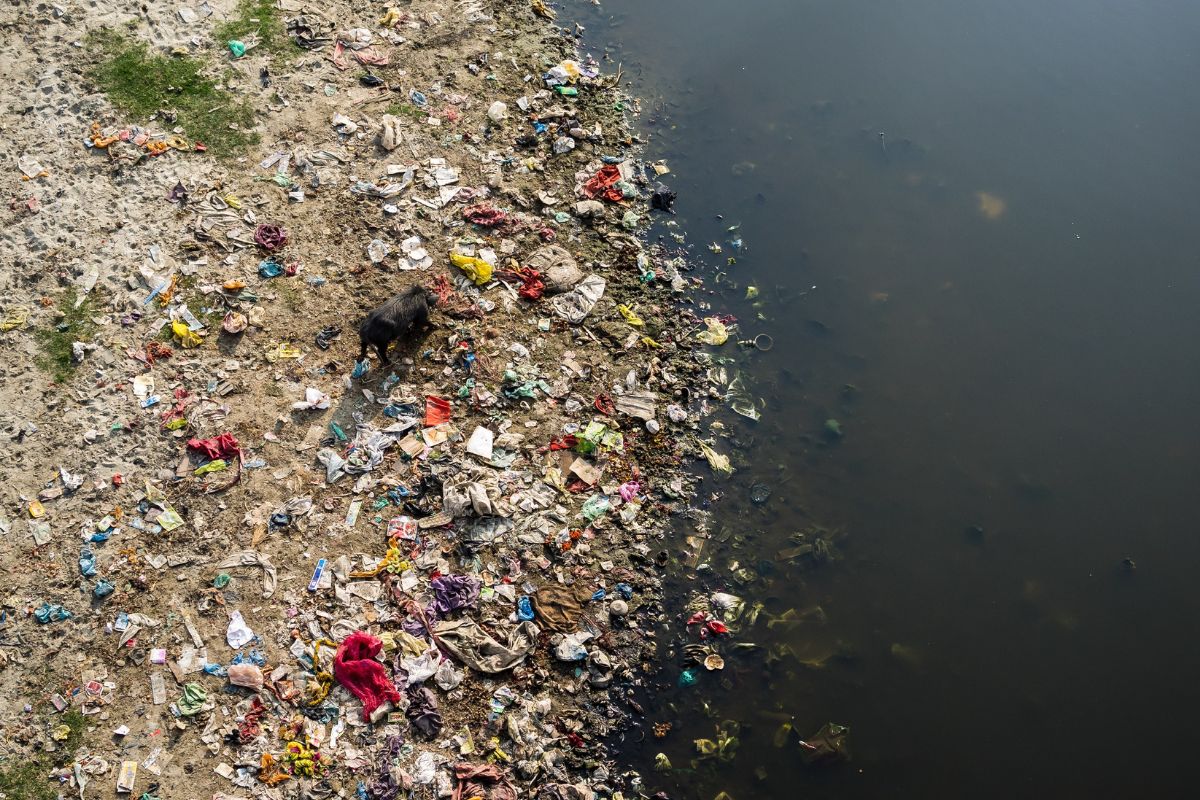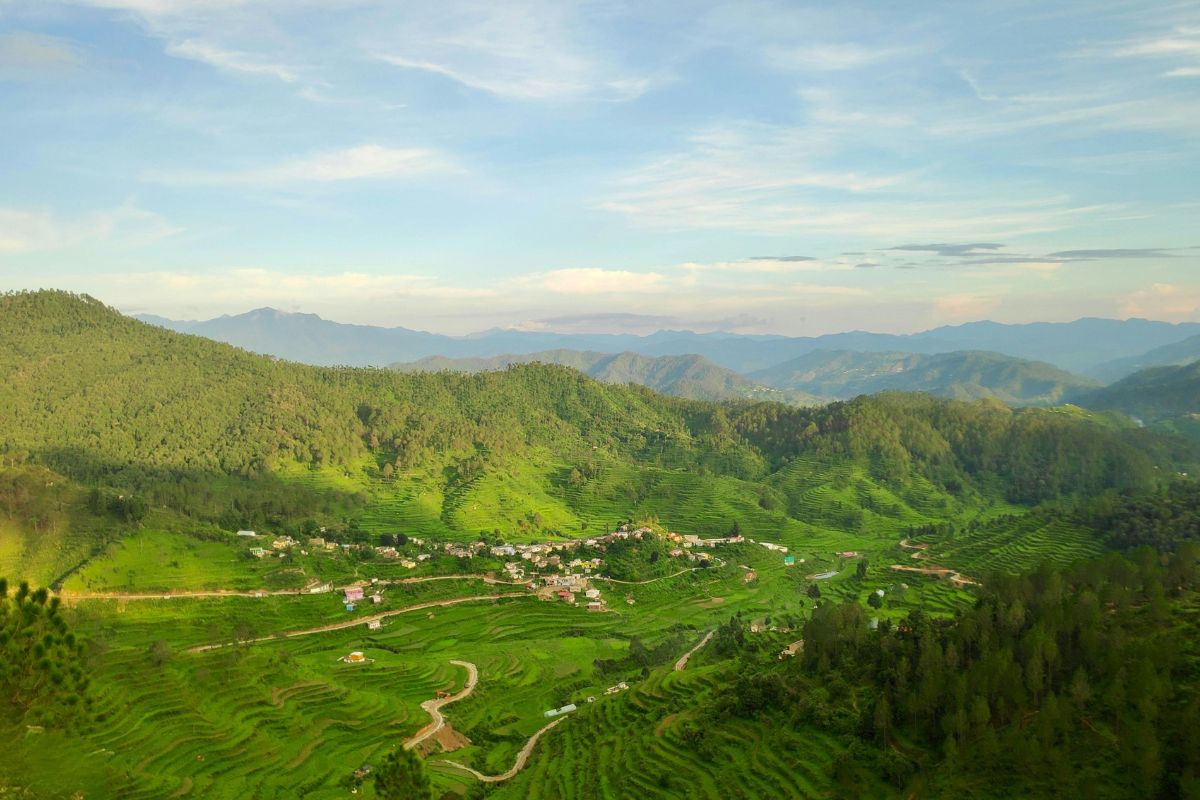As Delhi readies for Chhath Puja this autumn, new government data paints a grim picture of the Yamuna’s health. A Delhi Pollution Control Committee (DPCC) report released on October 9, 2025, just as Chhath began, found the river unsafe for bathing at all city locations except the Palla entry point. Measured levels of organic waste were off the charts (BOD up to 145 mg/L and COD 416 mg/L at major drains – about five times legal limits). This has alarmed campaigners who note that thousands of festival devotees will enter the riverbed to pray.
The river’s condition has become a hot political issue. AAP activists challenged the BJP government’s claims of progress, even bringing Yamuna water bottles to the Chief Minister’s home. They accused officials of putting on a “show” of cleanliness for Chhath while the water remains filthy. Delhi’s water minister Parvesh Verma defended the cleanup efforts, noting that test data now show a massive drop in raw sewage bacteria at one site (from about 8 million to just 8,000 coliform units) and that DPCC reports are fully public online. In his view, women who’ve visited cleaned-up ghats say the river looks its “cleanest” ever. Both sides agree conditions change quickly with rains and releases of fresh water – but the core question remains: what do the scientists say about health risks in this water?
Recent studies show those risks are serious. A 2024 review in Applied Water Science found extremely high fecal bacteria counts in the Yamuna downstream of Delhi and Agra. The most contaminated spots (Delhi’s Nizamuddin area and a point below Agra) had fecal coliform bacteria levels in the range of hundreds of thousands to millions per 100 ml. (By comparison, safe bathing limits are a few hundred per 100 ml.) These bacteria come from untreated sewage and animal waste; such astronomical counts mean raw sewage is heavily overflowing. In plain terms, simply coming in contact with this water (through bathing or splashing) can expose people to waterborne illnesses like diarrhoea, dysentery and typhoid.
Another 2022 study (in PLOS ONE) looked at heavy metals along the river and their health risk, especially for children. Researchers found that arsenic – a toxic element linked to skin, heart and developmental problems – was high enough that the calculated “hazard index” for kids exceeded safe limits. In fact, they reported the exposure risk index (HI) was above 1 for children at most sites, driven largely by arsenic. Simply put, the river water contains enough toxic metals that children playing or drinking could face long-term health effects. The study warns that repeated exposure (through ingestion or even breathing river mist) may damage organs or growth in vulnerable groups.
A separate 2025 analysis of national monitoring data (CPCB records from 2012–2023) confirms that the Yamuna has never fully recovered from pollution spikes. This decade-long review found “considerable fluctuations” in key indicators (like dissolved oxygen, BOD and coliform bacteria) but overall “persistent pollution levels”. In other words, even though some years showed brief improvements (often after monsoon rains flush the river), high BOD and bacterial counts keep bouncing back. The study’s authors note that these elevated BOD/coliform levels signal ongoing sewage and waste dumping – and that sewage treatment in the basin remains woefully inadequate.
Times of India investigations echo these scientific findings. In March 2025, the Times of India reported that Yamuna data showed a spike in industrial pollutants even as sewage germs dipped. That DPCC assessment found that March’s chemical oxygen demand (COD), BOD and phosphate levels were “off the charts”, likely from factory effluents, while extra water releases had temporarily lowered fecal bacteria. In plain language, the water was laced with dissolved chemicals from industry (and even detergents), making it harder for aquatic life to breathe. As the story noted, even a brief turnaround in bacterial levels (due to rainwater dilution) could not hide the fact that dangerous chemicals were peaking.
A July 2025 report by the New Indian Express highlighted how the river’s contamination takes hold quickly after it enters the city. Government data cited in that article showed the Yamuna’s source (Yamunotri in the Himalayas) has virtually no fecal contamination (about 2 MPN per 100 ml), but just 50 km downstream in Delhi the counts soared to 285,000 MPN. (For context, the safe bathing limit is only 500 MPN.) Further downstream in Uttar Pradesh, levels remained high (e.g. 35,000 MPN at Shahpur). These figures mean the water is carrying enormous loads of untreated waste past Delhi, never “cleaning up” even 100 km later.
Taken together, these findings paint a clear picture: the Yamuna water is seriously polluted. Health experts warn that contact or ingestion could easily lead to diseases. The presence of fecal bacteria points to sewer overflow (risking gut infections), while heavy metals pose hidden chronic risks, especially to children. Even with the festive push to beautify riverbanks for Chhath, scientists and citizens say long-term solutions – like effective sewage treatment and strict industrial controls – are urgently needed. Without them, the river will continue to threaten public health whenever people bathe, fish or even bathe their cattle in its waters.
Support us to keep independent environmental journalism alive in India.
Keep Reading
Highway Halt Puts Kashmir’s Fruit Economy at Risk
MP brings back Bhavantar as farmers lose soybean harvests
Stay connected with Ground Report for underreported environmental stories.
Follow us onX, Instagram, and Facebook; share your thoughts at greport2018@gmail.com; subscribe to our weekly newsletter for deep dives from the margins; join our WhatsApp community for real-time updates; and catch our video reports on YouTube.
Your support amplifies voices too often overlooked, thank you for being part of the movement.









